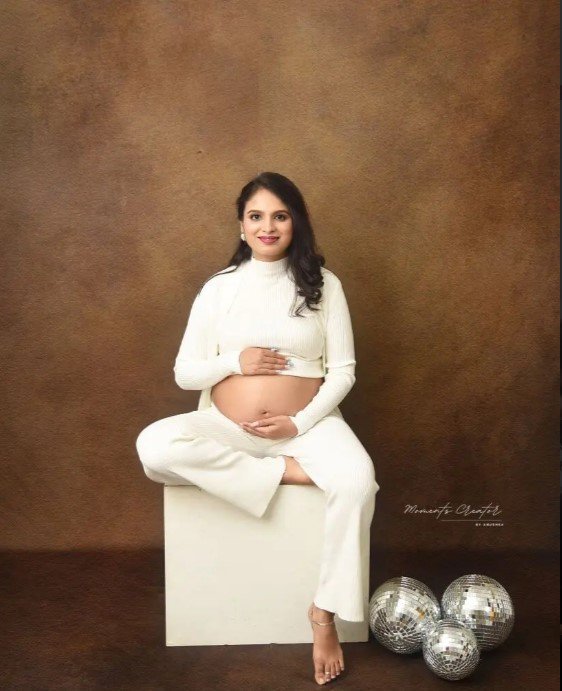Photography is all about capturing light, and using natural light effectively can transform ordinary home photos into extraordinary works of art. Whether you are shooting portraits, still life, or interior scenes, mastering the use of natural light can elevate the quality of your pictures without the need for expensive equipment. Here are some essential tips to harness natural light and shoot amazing pictures at home.
1. Understand the Light Sources in Your Home
Every home has different sources of natural light, and understanding these sources is the first step to great photography. Large windows, glass doors, skylights, and even the reflection of light off walls or floors can provide excellent lighting for your photos. Observe how light moves through your space at different times of the day and experiment with various locations to find the best lighting conditions for your shots.
Morning Light
Morning light is often soft and diffused, making it perfect for portraits and still life photography. The sun is low in the sky, creating gentle shadows and a warm glow. This type of light is ideal for creating a cozy, inviting atmosphere in your photos.
Midday Light
Midday light can be harsh due to the sun being directly overhead. This can result in strong shadows and high contrast. However, you can use this light effectively by shooting in shaded areas or diffusing the light with curtains or sheer fabrics. Alternatively, you can embrace the harshness for dramatic, high-contrast images.
Golden Hour and Blue Hour
The golden hour (shortly after sunrise and before sunset) and blue hour (just before sunrise and after sunset) provide magical lighting conditions. The golden hour offers warm, golden hues and soft shadows, while the blue hour provides a cool, ethereal light. These times of day are perfect for creating atmospheric and visually appealing photos.
2. Position Your Subject Relative to the Light
The position of your subject relative to the light source can drastically affect the outcome of your photo. Here are some common lighting setups to consider:
Front Lighting
When the light source is in front of your subject, it evenly illuminates the face or object, reducing shadows and highlighting details. This setup is great for capturing clear and well-lit images, but it can sometimes result in flat, less dynamic photos.
Side Lighting
Side lighting occurs when the light source is positioned to the side of your subject. This setup creates strong shadows and highlights, adding depth and dimension to your photos. It is particularly effective for creating dramatic portraits and textured still life images.
Backlighting
Backlighting happens when the light source is behind your subject. This setup can create beautiful silhouettes and halos around your subject, adding a sense of mystery and drama. To avoid underexposing your subject, you might need to adjust your camera settings or use a reflector to bounce light back onto the front of the subject.
Top Lighting
Top lighting is when the light source is above your subject. This setup can create interesting shadows and highlights, particularly in still life and food photography. However, it can also create unflattering shadows on faces, so use it with caution for portrait photography.
3. Utilize Reflectors and Diffusers
Reflectors and diffusers are simple tools that can significantly enhance natural light photography. Reflectors bounce light back onto your subject, filling in shadows and creating a more even illumination. You can use professional reflectors or improvise with white foam boards, aluminum foil, or even white walls.
Diffusers soften harsh light, creating a more flattering and gentle illumination. Sheer curtains, white bedsheets, or translucent shower curtains can serve as effective diffusers. By placing a diffuser between the light source and your subject, you can create a soft, diffused light that is perfect for portraits and delicate still life compositions.
4. Experiment with Different Angles and Perspectives
Changing your shooting angle and perspective can dramatically alter the way natural light interacts with your subject. Shoot from above, below, or at eye level to see how the light and shadows change. This experimentation can lead to unique and compelling compositions that highlight the beauty of natural light in different ways.
Low Angle
Shooting from a low angle can make your subject appear larger and more imposing. It can also capture interesting light patterns and shadows, particularly if the light source is above the subject.
High Angle
A high angle can provide a fresh perspective and is particularly useful for still life and food photography. This angle can highlight textures and details that might be missed from eye level.
Eye Level
Shooting at eye level creates a natural and relatable perspective. This angle is ideal for portraits and capturing everyday moments in a way that feels intimate and engaging.
5. Be Mindful of the Background
The background of your photo plays a crucial role in the overall composition. A cluttered or distracting background can detract from the subject, while a clean and simple background can enhance the impact of your image. When using natural light, pay attention to how the background is lit and how it complements your subject.
Neutral Backgrounds
Neutral backgrounds like white walls, wooden floors, or simple curtains can provide a clean canvas that allows your subject to stand out. These backgrounds are particularly effective for portraits and product photography.
Textured Backgrounds
Textured backgrounds, such as brick walls, textured fabrics, or natural elements like plants, can add depth and interest to your photos. Ensure that the lighting highlights the texture without overwhelming the subject.
6. Adjust Camera Settings for Optimal Exposure
Understanding your camera settings is crucial for capturing well-exposed photos in natural light. Here are some key settings to consider:
ISO
ISO controls the sensitivity of your camera’s sensor to light. In bright natural light, use a low ISO (100-200) to avoid noise and grain. In low light conditions, you may need to increase the ISO, but be mindful of potential noise.
Aperture
Aperture controls the amount of light entering the camera and the depth of field. A wide aperture (low f-number) allows more light and creates a shallow depth of field, which is great for portraits. A narrow aperture (high f-number) lets in less light and increases the depth of field, which is useful for landscapes and still life.
Shutter Speed
Shutter speed determines how long the camera’s sensor is exposed to light. A fast shutter speed (1/250 or faster) is ideal for freezing motion and capturing sharp images in bright light. A slow shutter speed (1/60 or slower) can create motion blur and is useful in low light conditions, but requires a steady hand or tripod to avoid camera shake.
7. Embrace Shadows and Highlights
Natural light creates a dynamic range of shadows and highlights that can add depth and interest to your photos. Embrace these elements and use them to your advantage. Play with the contrast between light and shadow to create mood and drama in your images.
High Contrast
High contrast lighting can create striking and dramatic photos. Use strong shadows and bright highlights to emphasize shapes, textures, and emotions.
Low Contrast
Low contrast lighting produces a softer and more subtle effect. This is ideal for creating gentle, dreamy images with a calm and serene atmosphere.
8. Practice Patience and Observation
Natural light is constantly changing, and capturing the perfect shot often requires patience and keen observation. Spend time studying how the light changes throughout the day and how it interacts with different elements in your home. Be ready to capture fleeting moments of beautiful light, and don’t be afraid to take multiple shots to find the perfect one.
Conclusion
Using natural light to shoot amazing pictures at home is an art that requires practice, observation, and a willingness to experiment. By understanding the different qualities of light, positioning your subject effectively, utilizing reflectors and diffusers, and adjusting your camera settings, you can create stunning images that highlight the beauty of natural light. Embrace the shadows, play with angles, and most importantly, enjoy the process of discovering and capturing the perfect shot. Learn More




Арматура диаметром 32 мм, изготовленная из стали марки А500С, является одним из самых востребованных видов металлопроката в строительстве. Она применяется при возведении фундаментов, армировании стен и перемычек. https://armatura32.ru
Этот информативный текст отличается привлекательным содержанием и актуальными данными. Мы предлагаем читателям взглянуть на привычные вещи под новым углом, предоставляя интересный и доступный материал. Получите удовольствие от чтения и расширьте кругозор!
Исследовать вопрос подробнее – https://vyvod-iz-zapoya-1.ru/